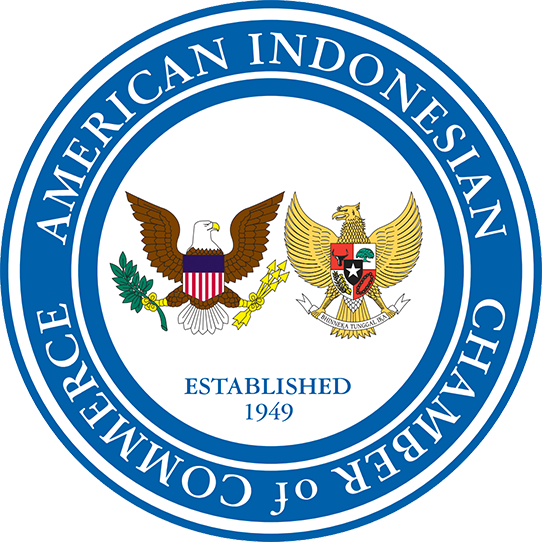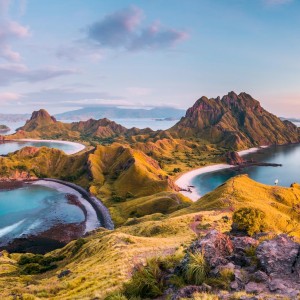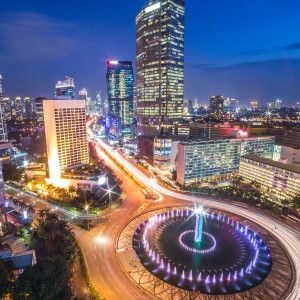October 2022Issue To Watch: The Increasing Role of Indonesia’s State-Owned Enterprises |
| Commentary by Wayne Forrest
You send your kids to school in America, thinking they’re safe, and then a shooting occurs. In Indonesia, it could be a flood collapsing a school’s wall. America’s infrastructure issues are internal, between our ears; in Indonesia, they’re external. President Jokowi has built hundreds of kilometers of toll roads, new reservoirs, airports, and seaports, but the floods in a sinking Jakarta remain, notwithstanding the dream of a green new capital which one day may alleviate them. Three children were crushed a few days ago by a crumbling wall at their school in south Jakarta. Footage on social media showed some teenage students crying in panic while trying to evacuate from the school, submerged in waist-deep waters. Floods in Indonesia’s capital killed 5 last February and 67 in 2020. They displaced thousands more as whole neighborhoods were submerged. Every year at some point knee deep water finds its way to the central business district snarling traffic for days. The floods are triggered by seasonal heavy rains, non-working flood gates and pumps that failed due to lack of maintenance, all owned and operated by a state-owned enterprise(SOE). Some might ask why Indonesia is trying to build a new capital in the middle of a jungle in Kalimantan when it can’t even fix the flooding. I disagree. I think it can do both. It’s important for nations to have a vision that can galvanize its people. JKF’s “man on the moon” goal appeared unrealistic when he announced it in 1961 but NASA achieved it and, in the process, created many new technologies (memory foam, GPS, image sensors, carbon fiber surfaces) that improved safety. Indonesia’s new capital may do the same. But the SOEs are a problem. Upon my return from Indonesia in August I spoke enthusiastically about my experience riding the new toll road from central Java to Jakarta and visiting the new city-within-a-city, Pantai Indah Kapuk, rising along the coast north of Jakarta. Impressive new infrastructure. But reading about the floods as well as the stories about the debt of the state-owned construction companies brings me back to reality and to a question: how sustainable is Indonesia’s SOE-driven economy? Would not a shift toward one centered on the private sector achieve better results? The state-owned construction company Waskita Karya is currently planning to sell five of its toll roads to both pay off debt and bring in funds for new projects. An entity set up and managed by the government, Indonesian Investment Authority (INA), is the likely buyer. However, even with the selling of its assets, Waskita Karya will still not be able to fully pay off its already-ballooning debt of USD $5 billion. Having maxed out its credit limit and having no collateral assets left for loans, Waskita is struggling to find capital for debt and funding for new government-related project operations. A former President Director is serving time for embezzling funds for a fictitious project. The government will probably have to make a costly cash injection to keep it afloat, as it has done with many other SOE’s that are not profitable. These others include scandal ridden government-owned enterprises such as the nation’s flagship airline Garuda (bankrupt in part because of cozy leasing deals approved by a Parliament sweetened by $5 billion in under-the-table bribes), PT Jiwasraya (a state insurance company whose president and top directors connived with willing asset management companies to embezzled premiums incurring over $1.4 billion in state losses), and the State Trading Company (PPI), which reportedly has a very thin balance sheet. Many keep going in a zombie-like state; they employ too many to shutter completely. There are other examples of state-owned enterprises replacing what the private sector could do. The INA recently invested $300 million in Traveloka (Indonesia’s leading online travel company) along with BlackRock, Allianz and Traveloka’s model Expedia. If the INA were a typical sovereign wealth fund, I might applaud the deal, but it isn’t. The INA is more like a private equity fund, using money invested by others. Why couldn’t INA’s equity partners do so directly. I thought INA was created to bring bullet proof certainty to foreign investors who could more easily be persuaded to get involved in less straightforward strategic projects. Maybe they will, eventually. The SOE Mind ID( a new holding company for state-owned mining assets) needs to borrow many billions to finance its purchase of 51% of Freeport Indonesia, an amount that could have been created by allowing private Indonesian ownership through the stock exchange. I can see the logic of the INA cleaning Waskita’s balance sheet but had the private sector a role in building the roads in the first place, the government wouldn’t be in the position it currently finds itself. A 30 year revenue- backed bond issued by a toll authority would have financed them. Think of what the government could have done with the money saved from floating Freeport’s stock and the cash injections in moribund SOE’s. It could use the funds, for example, to extend free education to 12 years from the current 9. The increasing role of the SOEs extends to important new sectors of the economy such as electric vehicles. To realize its goals to create valued-added local industries utilizing its mineral wealth, the government created its own electric battery company, Indonesian Battery Corporation (IBC). The company’s main shareholders are other state-owned enterprises, MIND ID, nickel miner Aneka Tambang (Antam), electric utility PLN, and oil and gas company Pertamina. None of these companies have any experience making batteries. All foreign battery companies are required to work with IBC, a reason, perhaps why Tesla, although heavily courted by President Jokowi, hasn’t invested. The reason for IBC’s role in the ventures remains unclear. I am pleased that Indonesia is recovering, has a robust trade account, and believes it will grow at 5% this quarter, a rate as high as any other G20 nation. It has done an amazing job through the pandemic, making the right decision initially to immediately purchase vaccines at the available discounts. Through 2021-22 it has used its G20 leadership wisely, creating well designed hybrid events. The November Leader’s meetings remain shaky due to the Russia-Ukraine conflict, but they will undoubtedly go well accruing to Indonesia’s benefit. A September Financial Times article, parts of which read like a government press release, stated: “At a time when the global economy is being battered by the Ukraine war and the global energy, food and climate crises, Indonesia has emerged as an unlikely outlier, boasting both a booming economy and period of political stability.” This assessment is accurate but misses the direction of Indonesia’s economy which is pointing to more government and less private sector. In announcing an upcoming investment conference, former Trade Minister Enggar Lukito, now working with Bersatu Holdings, the organizer, said: “At the conference, we will have government explain the state budget and its spending posture. It seems the state budget will likely remain as the locomotive of the economic growth,” Enggar said. I worry that its not just the state budget that’s the engine, its also the State itself. I have real doubts that Indonesia’s SOE’s, given how susceptible they are to corruption and manipulation, how prone they are to mismanagement and the need for cash injections, can be the vehicle for Indonesia’s long term development. I worry about the school kids swept away in the next flood because an SOE didn’t do its job. |
American Indonesian Chamber of Commerce

- HOME
- ABOUT AICC
- The History of AICC
- Major Initiatives
- Trade, Tourism, and Investment Program (TTI)
- Opportunity Indonesia
- Introducing Indonesia: Scholastic Ambassador Program
- Preventing A Lost Generation
- Comprehensive Indonesian-English Dictionary
- Sustain Sumatra
- 10 Year’s After: A nationwide public awareness program
- Support to Mandiri Craft
- Congressional Staff Visit
- Business and Cultural Programs in Dallas, Texas
- US-Indonesia Women’s CEO Summit
- Topeng Sehat: AICC Initiative Against COVID-19
- 2021 Shipping NYC Surplus PPE To Indonesia
- Board of Directors
- Membership Benefits
- FAQ
- Membership Registration and Forms
- EVENTS
- LINKS
- TRADE LEADS
- LATEST NEWS/COMMENTARY
- DOING BUSINESSS
- COUNTRY DATA
- BLOG POSTS





AMERICAN INDONESIAN CHAMBER OF COMMERCE




